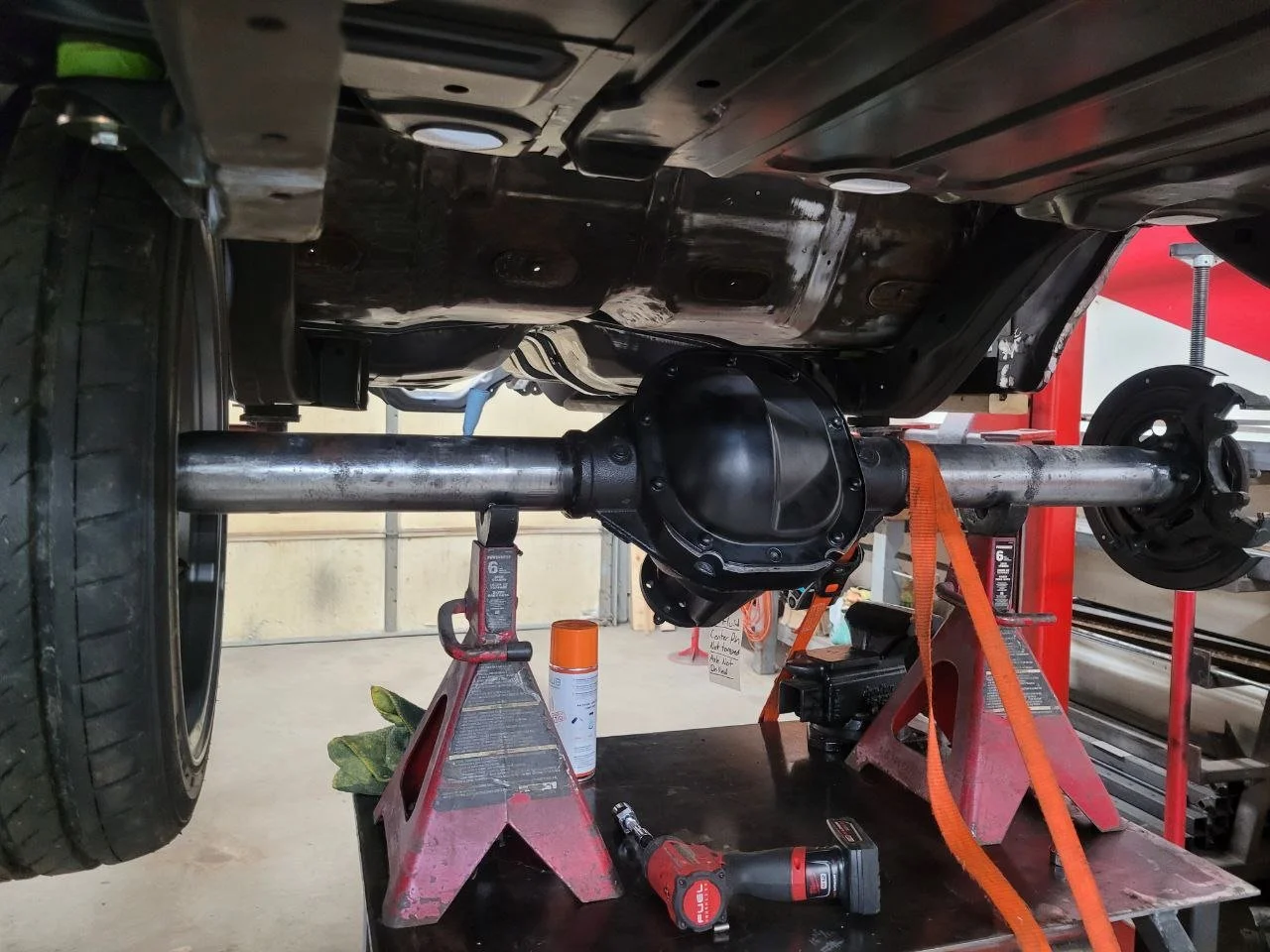Ford 8.8 Retrofit
Shortening an axle is nothing new in the hotrod world, but what if there was an easier way to retrofit the finished axle into your ride?
Shown above is a CAD model painstakingly made by our R&D Engineer Zack Crews. he has made the existing frame and body into a mesh then trimmed it for use in Solidworks. The shortened axle was then scanned and cleaned up for use in Solidworks. The wheels/arms/coilovers where then parametrically modeled as these were simpler modeled than scanned. Establishment of planes and pinion angle (check with your transmission/engine and counter this) then determine the location of the weld in arm brackets. Some quick work in weldments and you have OAL tube length to cut as well a printable paper template for notching the tubes. Cope to your desired weld specs and tack everything in! As always, it doesn’t have to be Solidworks, make your CAD suite work for you!
Some pointers before we go:
Verify your scan accuracy to a distance measurable in real life! We aren’t shooting for design study convergence here but we need an acceptable tolerance to work with and to expect
Simplify your final mesh before importing into CAD. Trim all unnecessary info/data out, this extra noise affects CAD processing and can ultimately affect your program’s stability/solve times
Use scan spray or 3D scanner tracking dots, remember, slow is smooth and smooth is steady. Good tracking can make or break a point cloud and subsequently a mesh
Use a fluid/digital level gauge to ensure your work is flat and plumb to your drawing, the more you deviate from your CAD work the harder it is to align your vehicle and in extreme cases, your vehicle will not track straight. Take care to ensure these details are not overlooked as they are the hardest to correct later.
Brace your frame if you aim to drive the car on competition, this means any use other than street, your new axle setup may handle everything you throw at it but remember the original frame was not designed with this in mind. Weld reinforcement plates over thin sections and fully box any areas that directly constrain the axle.
This method may be new to you but having a living CAD document makes future revisions and additions (i.e. minitubs or Ford 9” anyone?) a breeze. An up to date CAD document would also allow you to test new wheel mockups/alignments without having to lift a finger. These design configurations can be saved for quick reference should you change your setup from street to strip, prep or no prep.
What are you still reading for, go out and wrench! Have fun and be well, MINHSANE OUT!

